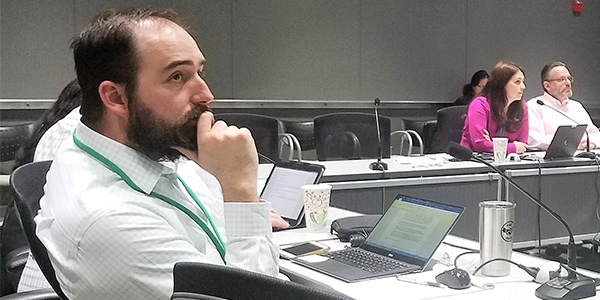AUSTIN, Texas — ERCOT Generators Upset over Early March Weather Event.)
Staff are currently drafting three Nodal Protocol revision requests (NPRRs) with the hopes of presenting them to the Technical Advisory Committee in May.
During a Wednesday workshop on outage activity related to ERCOT’s operating condition notice (OCN) ahead of the event, Luminant’s Ian Haley shared a proposal for an “outage reliability unit commitment” (ORUC) process — though the name is up for debate. Units subject to the ORUC wouldn’t be allowed to self-commit, giving the market 24 hours to “perform.”
Under the proposal, ERCOT would provide 24-hour notice that it will run ORUC, along with a time frame and reliability justification. Units would be committed by the hourly and day-ahead RUC processes during the outage delay period and settled with a make-whole payment floor.
The goal is to optimize outages, Haley said. “If you’re ORUC’ed, think of it as [a reliability-must-run agreement] for capacity,” he said.
Luminant’s ORUC process would be incorporated into NPRR930, which includes a pricing make-whole payment. The change requires ERCOT to use a weekly RUC that can commit resources with an approved outage. Committed units would be made whole with respect to the actual costs and cancellation of the outage. The NPRR also sets an offer floor for the resource at the systemwide offer cap.
“There are still outstanding questions, but I didn’t really feel I lost the room,” Haley said. “If we get into this situation again, we should all be able to look into the protocols and see how this will work.”
ERCOT Senior Director of System Operations Dan Woodfin said the ORUC process could also be a sub-routine within NPRR934, which creates a new OCN type — an advance action notice — that alerts qualified scheduling entities and transmission service providers to modify their outage plans.
Staff is also developing NPRR935, which would require ERCOT to post wind and solar forecasts and indicate which model is being used for each of the forecasts. Market participants complained about a lack of transparency into which forecasts were being used in late February before the event.
“We know ERCOT will develop more forecasts, so I’d like [the NPRR] to say all forecasts are published,” Citigroup Energy’s Eric Goff said.
“We’re posting the information, but I can’t make anyone drink the water,” Woodfin said. “We’ll go back and look to see if there’s a mechanism to build more flexibility into the OCN process.”
ERCOT has scheduled a second workshop on the OCN issue for this Wednesday in order to stay on track for presenting the information to the TAC during its May 22 meeting. The workshop will take the place of an urgent Protocol Revision Subcommittee meeting that was to take up OCN issues. The PRS will meet as regularly scheduled on May 9.
Workshops Discuss Storage, Inverter-based Resources
The OCN workshop was just one of three held in Austin last week. Warren Lasher, ERCOT’s senior director of system planning, opened an April 23 standing room-only workshop on energy storage by saying, “It’s a great day.
“We get to talk about and identify issues, and talk about who fixes those issues,” he said. “We don’t have to solve them here.”
Lasher said energy storage is a growing resource in the ERCOT market, with about 100 MW available now and an additional 70 MW expected before summer begins. He said another 3 GW, “maybe more,” of energy storage is under study in the interconnection queue.
ERCOT sees batteries as “limited duration” resources that can charge from the grid or discharge onto it. Attendees heard presentations from staff and from E.ON Climate & Renewables North America’s Andrea Bianco, who explained the various available storage technologies.
Discussion topics included how to address hybrid units, communicating resource status and desired operational constraints, reliability requirements, outage evaluation topics, and storage resources’ bids and offers.
The storage workshop served as a lead-in to a Wednesday workshop on transmission-connected inverter-based resources. That workshop’s agenda was highly technical and designed for transmission service providers, resource entities and their vendors.
— Tom Kleckner



